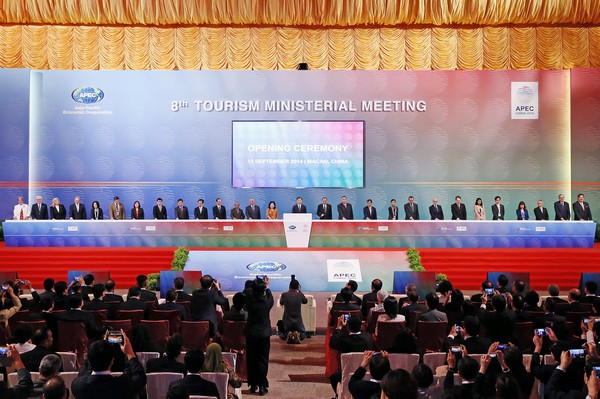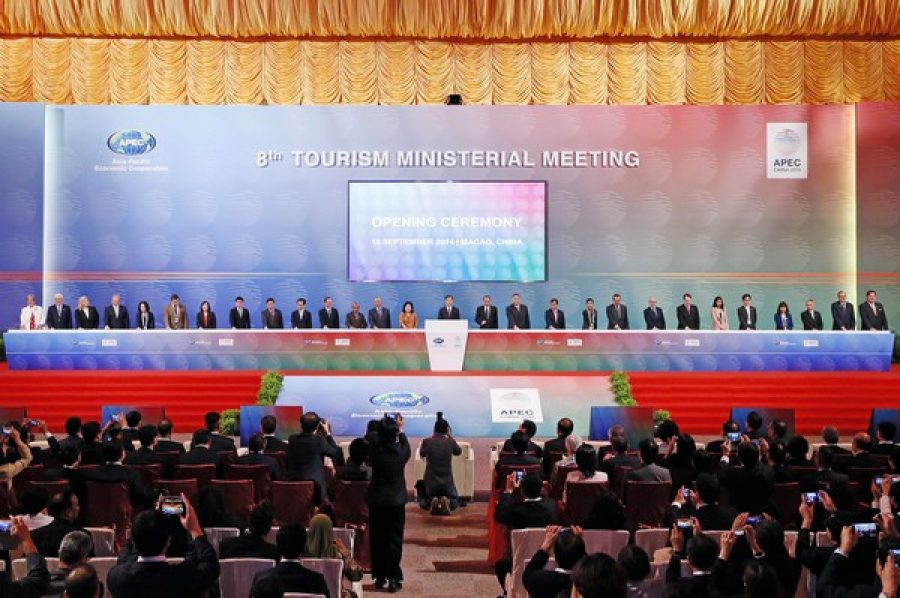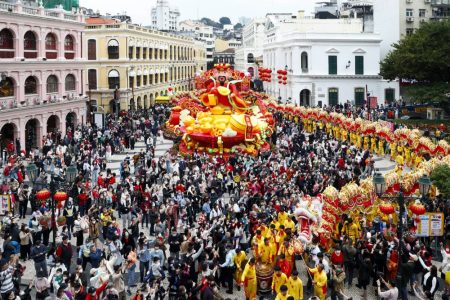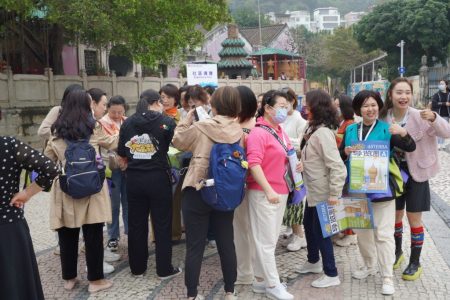The 8th APEC Tourism Ministerial Meeting (TMM8) wrapped up in Macau on Saturday after issuing a declaration which covered measures that ensure the Asia-Pacific travel and leisure industry keeps pace with changing consumer trends and advances in technology.
At the one-day meeting, 152 attendees from 21 APEC member economies and international tourism organizations, discussed five main topics including integration of Asia-Pacific tourism markets, facilitating transformation and growth of the tourism industry, promoting intelligent tourism with modern technology and interconnection of Asia Pacific travel, and encouraging low-carbon development and co-operation between tourism operators.
“By removing barriers and improving the integration of the Asia- Pacific tourism market, APEC can meet its new target of 800 million tourists by 2025,” said Chinese Vice Premier Wang Yang.
“Through encouraging the flow of people and investment within the region, the development of the tourism sector helps contribute to an open market while boosting regional connectivity and economic growth,” Wang said.
The 152 attendees recognized that the Asia-Pacific region is the largest tourism market in the world, and that there is great potential for promoting the integration of the Asia-Pacific tourism market, according to the Macao Declaration.
They encouraged APEC member economies to discuss the necessity and feasibility of enhancing tourism coordination mechanisms in the Asia-Pacific region and promote integrated development of tourism and other industries.
The ministers also said that member economies should boost innovation, explore and promote smart tourism and related cooperation, and share business and other opportunities that come along with smart tourism.
They vowed to steadily increase tourism market access, improve the mechanism for tourism market management, and simplify visa and customs clearance procedures.
By improving visa processing, APEC stands to gain up to 57 million additional international tourist arrivals by 2016 and an estimated 2.6 million new jobs, according to a report issued by the United Nations World Travel Organization and the World Travel and Tourism Council.
“We welcome promoting the tourism sector as a key pillar in APEC’s work,” said Mari Pangestu, Indonesian Minister of Tourism and Creative Economy.
“The sector is critical economically for the region with the Asia-Pacific enjoying the largest tourism market in the world. Globally, the tourism industry is the third largest sector, providing one in 11 jobs worldwide,” she added.
Alan Bollard, executive director of the APEC Secretariat, said that creating a next-generation tourism sector by seamlessly connecting tourist travelers, integrating new digital technologies and offering sustainable tourism destinations are keys to maintaining a competitive industry.
“Adapting our tourism sector to these new trends will ensure the Asia-Pacific remains a leading tourism market globally while preserving the region’s cultural and environmental heritage,” Bollard said.
Established in 1989, APEC currently has 21 member economies and three official observers.
To enhance tourism exchanges and cooperation and facilitate tourism development of the Asia Pacific Region, a biennial tourism ministerial meeting was launched in 2000.
TMM8 is the first APEC Tourism Ministerial Meeting hosted by China, which has been sending delegations to participate in this event since its inception.(macaunews/xinhua)






